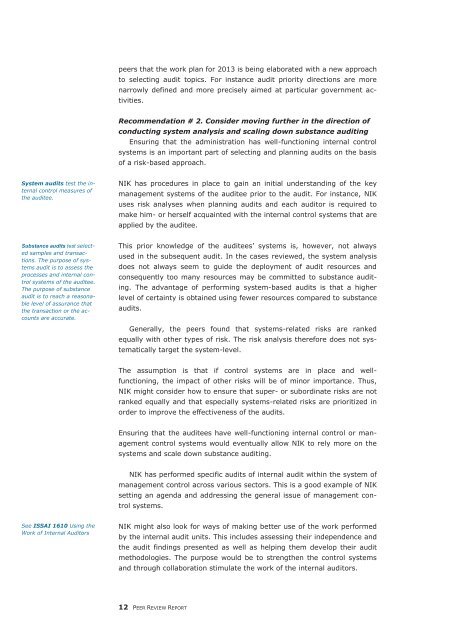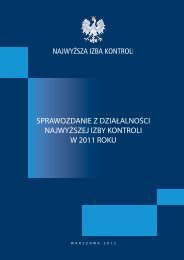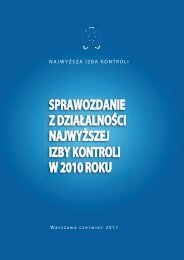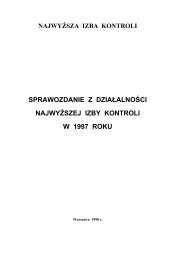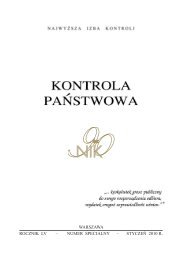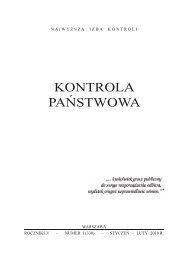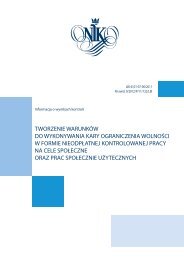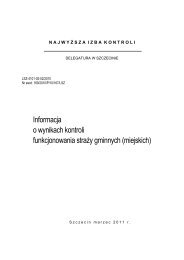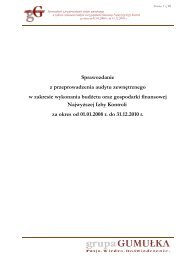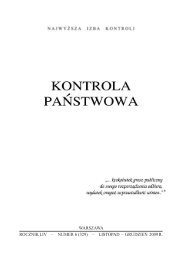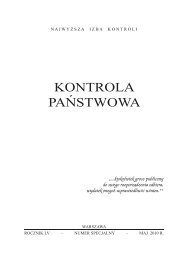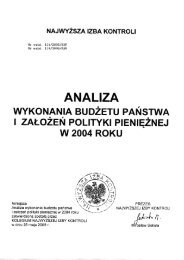NIK peer review report - Najwyższa Izba Kontroli
NIK peer review report - Najwyższa Izba Kontroli
NIK peer review report - Najwyższa Izba Kontroli
You also want an ePaper? Increase the reach of your titles
YUMPU automatically turns print PDFs into web optimized ePapers that Google loves.
<strong>peer</strong>s that the work plan for 2013 is being elaborated with a new approachto selecting audit topics. For instance audit priority directions are morenarrowly defined and more precisely aimed at particular government activities.Recommendation # 2. Consider moving further in the direction ofconducting system analysis and scaling down substance auditingEnsuring that the administration has well-functioning internal controlsystems is an important part of selecting and planning audits on the basisof a risk-based approach.System audits test the internalcontrol measures ofthe auditee.<strong>NIK</strong> has procedures in place to gain an initial understanding of the keymanagement systems of the auditee prior to the audit. For instance, <strong>NIK</strong>uses risk analyses when planning audits and each auditor is required tomake him- or herself acquainted with the internal control systems that areapplied by the auditee.Substance audits test selectedsamples and transactions.The purpose of systemsaudit is to assess theprocesses and internal controlsystems of the auditee.The purpose of substanceaudit is to reach a reasonablelevel of assurance thatthe transaction or the accountsare accurate.This prior knowledge of the auditees’ systems is, however, not alwaysused in the subsequent audit. In the cases <strong>review</strong>ed, the system analysisdoes not always seem to guide the deployment of audit resources andconsequently too many resources may be committed to substance auditing.The advantage of performing system-based audits is that a higherlevel of certainty is obtained using fewer resources compared to substanceaudits.Generally, the <strong>peer</strong>s found that systems-related risks are rankedequally with other types of risk. The risk analysis therefore does not systematicallytarget the system-level.The assumption is that if control systems are in place and wellfunctioning,the impact of other risks will be of minor importance. Thus,<strong>NIK</strong> might consider how to ensure that super- or subordinate risks are notranked equally and that especially systems-related risks are prioritized inorder to improve the effectiveness of the audits.Ensuring that the auditees have well-functioning internal control or managementcontrol systems would eventually allow <strong>NIK</strong> to rely more on thesystems and scale down substance auditing.<strong>NIK</strong> has performed specific audits of internal audit within the system ofmanagement control across various sectors. This is a good example of <strong>NIK</strong>setting an agenda and addressing the general issue of management controlsystems.See ISSAI 1610 Using theWork of Internal Auditors<strong>NIK</strong> might also look for ways of making better use of the work performedby the internal audit units. This includes assessing their independence andthe audit findings presented as well as helping them develop their auditmethodologies. The purpose would be to strengthen the control systemsand through collaboration stimulate the work of the internal auditors.12 PEER REVIEW REPORT


